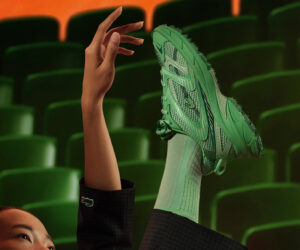
Pablo Picasso, one of the most influential and revolutionary artists of the 20th century, experienced a unique period in his career while living in Nazi-occupied Paris during World War II. Despite the political turmoil and oppressive conditions, Picasso remained in the French capital, continuing to create some of his most profound and thought-provoking works. His studio on Rue des Grands-Augustins became a sanctuary of artistic resilience, a place where he resisted the cultural censorship of the Nazi regime and produced art that reflected both his personal struggles and the collective anxieties of war-torn Europe.
The Historical Context: Nazi-Occupied Paris
By 1944, the Second World War was nearing its conclusion, and France was still under German occupation. Life in Paris during these years was marked by scarcity, fear, and a pervasive atmosphere of oppression. The Nazis imposed strict regulations on artistic expression, censoring and banning works they deemed “degenerate.” As a prominent modernist and a Spaniard with anti-fascist sympathies, Picasso was under constant surveillance. Despite this, he chose to stay in the city rather than seek refuge elsewhere, as many of his contemporaries had done.
Picasso’s defiance was not only a political stance but also an artistic one. He continued to work prolifically, using his art as a means of resistance. The famous Guernica, painted in 1937 in response to the Spanish Civil War, remained a powerful statement against tyranny and violence. Though the painting itself was not in Paris at the time (it had been sent to the United States for safekeeping), its message lingered in Picasso’s creative output during the occupation.
Picasso’s Studio on Rue des Grands-Augustins
Picasso’s studio at 7 Rue des Grands-Augustins held significant personal and artistic meaning for him. The historic building, dating back to the 17th century, had once served as the setting for Honoré de Balzac’s novella The Unknown Masterpiece. For Picasso, it became both a refuge and a crucible for creativity. The studio, filled with canvases, sculptures, and sketches, bore witness to the daily struggles of an artist seeking to maintain his voice in a stifled society.
During 1944, Picasso spent long hours in his studio, creating paintings, sculptures, and ceramic works that reflected the grim realities of war and occupation. His works from this period often incorporated dark, somber tones and distorted forms, mirroring the psychological weight of the times. Pieces like The Charnel House (1944–45) depicted the horrors of war in a raw, expressive style, with fragmented figures and unsettling imagery reminiscent of Guernica.
His sculptural work, particularly his bronze pieces, was constrained by material shortages due to the war. Bronze was scarce and often repurposed for military use, forcing Picasso to innovate with alternative materials such as plaster and found objects. His resourcefulness during this time demonstrated his unwavering commitment to artistic expression, despite the logistical challenges imposed by the war.
Artistic Themes and Influences
Picasso’s work in 1944 was marked by themes of suffering, resistance, and the passage of time. His personal experiences—living under occupation, dealing with restrictions, and facing the constant threat of Nazi persecution—filtered into his art in profound ways.
Several recurring motifs emerged in his work during this period:
•Fragmented and distorted figures: These reflected both the physical destruction of war and the psychological disintegration experienced by individuals living under occupation.
•The Minotaur: A symbol Picasso had frequently explored earlier in his career, the Minotaur reappeared in his wartime works, representing both the oppressor and the oppressed in the complex interplay of power and resistance.
•Still life compositions: Simple objects, such as skulls, bottles, and newspapers, took on symbolic weight in his paintings, often conveying themes of mortality and survival.
Despite the somber subject matter, Picasso’s work retained a sense of hope and endurance. His cubist experiments continued, and he explored the interplay between abstraction and figuration, using art to process and transcend the immediate horrors of war.
Encounters with the Resistance and Intellectual Circles
While Picasso was not directly involved in armed resistance, his support for the French Resistance was well known. He associated with leftist intellectuals, writers, and fellow artists who opposed the Nazi occupation. His friendships with figures such as poet Paul Éluard and philosopher Jean-Paul Sartre provided him with both inspiration and solidarity during these dark times.
In the summer of 1944, as the liberation of Paris approached, Picasso’s studio became a hub of clandestine activity. Resistance members often visited him, and he discreetly assisted their efforts by providing financial aid and hiding fugitives. Though he could not exhibit his work publicly under the occupation, his art served as a silent protest against tyranny.
After the liberation of Paris in August 1944, Picasso openly celebrated the city’s freedom. His studio became a gathering place for those who had resisted the Nazis, and he used his artistic prominence to support the new cultural movements emerging in post-war France.
The Creation of “The Charnel House”
One of the most significant works Picasso created in 1944 was The Charnel House, a painting that directly addressed the atrocities of war. Based on reports of Nazi massacres, the piece depicts a twisted, nightmarish vision of mutilated bodies piled upon one another. Rendered in stark black, white, and gray tones, the painting evokes a haunting sense of grief and horror, drawing comparisons to the earlier Guernica.
The fragmented forms and chaotic composition of The Charnel House reflected Picasso’s evolving style, combining elements of Cubism and Surrealism to convey the fragmented reality of wartime Europe. The painting remains one of the most poignant commentaries on the brutality of the era.
Personal Life and Relationships in 1944
During this turbulent period, Picasso’s personal life was equally complex. His relationship with photographer Dora Maar, a key figure in his life during the late 1930s and early 1940s, was deteriorating. Their tumultuous dynamic, compounded by the strain of war and Picasso’s notoriously difficult personality, led to the gradual dissolution of their romance. Meanwhile, he became increasingly involved with Françoise Gilot, a young artist who would later become his partner and the mother of two of his children.
Despite the hardships of the occupation, Picasso maintained a vibrant social life within the artistic circles of Paris. His friendships with fellow artists, including Henri Matisse and Jean Cocteau, provided a sense of continuity and support amidst the uncertainty of war.
Post-Liberation and Legacy
With the liberation of Paris in August 1944, Picasso emerged as a celebrated figure of resilience and artistic defiance. He joined the French Communist Party later that year, aligning himself with leftist ideals that resonated with his anti-fascist sentiments. This political affiliation would influence much of his post-war work, with themes of peace and social justice becoming more prominent in his art.
His reputation as a resistance figure bolstered his status in the art world, and his post-war works continued to explore themes of memory, trauma, and reconstruction. The works created in his Paris studio during the occupation would go on to be studied as powerful reflections of an artist navigating the complexities of war, oppression, and survival.
Impression
Pablo Picasso’s time in his Paris studio in 1944 was a period of profound artistic and personal significance. Amidst the harsh realities of Nazi occupation, he remained steadfast in his commitment to art as a form of resistance and self-expression. His works from this time reflect the weight of history and the resilience of the human spirit, capturing the anxieties and hopes of a world on the brink of liberation.
Today, Picasso’s wartime works continue to serve as a testament to the enduring power of art in times of crisis, demonstrating that creativity can thrive even in the darkest of circumstances.
No comments yet.








